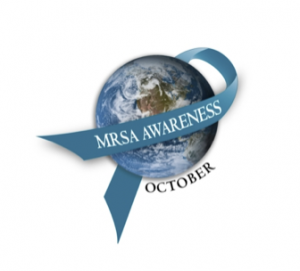 Is the physician’s white hospital coat a protection for or a danger to patients? Years ago, the United Kingdom, concerned that the fabric on the lower sleeve is rife with infectious matter, instituted a bare-below-the-elbows policy to reduce the risk of nosocomial infections (NI). (Murphy 2007, Kerr 2008, Gray 2008) (To clarify, “bare below the elbows” only applies to the arms, not to a practitioner’s nether regions.)
Is the physician’s white hospital coat a protection for or a danger to patients? Years ago, the United Kingdom, concerned that the fabric on the lower sleeve is rife with infectious matter, instituted a bare-below-the-elbows policy to reduce the risk of nosocomial infections (NI). (Murphy 2007, Kerr 2008, Gray 2008) (To clarify, “bare below the elbows” only applies to the arms, not to a practitioner’s nether regions.)
The United States is taking longer to arrive at such a policy, despite the fact that in June 2009 the American Medical Association (AMA) House of Delegates passed a resolution to encourage the “adoption of hospital guidelines for dress codes that minimize transmission of nosocomial infections (NI).” (AMA 2009) One reason for hesitation: The UK has not performed definitive studies to demonstrate that its “bare below the elbows” policy actually reduces nosocomial infections.
What is undeniable is that NI are a serious danger in the US. In 2002 alone, there were 1.7 million nosocomial infections, which resulted in 99,000 deaths in the United States, at an estimated annual cost of $6.7 billion. (Monina 2007, Graves 2004). And studies have shown that physicians’ coat sleeves and pockets are often colonized with the types of bacteria that cause NI. (Varghese 1999, Loh 2000, Wong 1991, Amy 2008)
These facts make it imperative to resolve any danger associated with medical uniforms. “Below the elbows” policies may be a starting point, but the AMA and hospitals should also be investigating other avenues of potential protection, such as novel fabrics that have antimicrobial properties “built into” them.
Endnotes
AMA, 2009. “Resolution 720: Hospital Dress Codes for the Reduction of Nosocomial Transmission of Disease.
Amy, MT, AT Kerri et al. 2008. “Bacterial Contamination of Health Care Workers’ White Coats.” Am J Infect Control 37(2) 101-105.
Graves, N. 2004. “Economics and Preventing Hospital-Acquired Infection. Emerg. Infect. Dis.
Gray, S. 2007 Sep 17. “Superbug Fears Kill Off Doctors’ White Coats.” The Times. [Accessed 19 June 2008]. http://www.timesonline.co.uk/tol/news/uk/health/article2470379.ece
Kerr, C. 2008. “Ditch that White Coat.” CMAJ 178(9):1127.
Loh, W, VV Ng, and J Holton. 2000. “Bacterial Flora on the White Coats of Medical Students.” J Hosp Infect 45(1):65-68.
Monina, R, and D Klevens, R Jonathan et al. 2007. “Estimates of Healthcare-Associated Infections.” Public Health Reports 122:160-166.
Murphy, C. 2007 Sep 17. “End for Traditional Doctor’s Coat.” BBC News. [Accessed 19 June 2008].
Varghese, D and H Patel. 1999. “Hand Washing. Stethoscopes and White Coats are Sources of Nosocomial Infection. BMJ 319(7208):519.
Wong, D, K Nye, and P. Hollis P. 1991. “Microbial Flora on Doctors’ White Coats. BMJ 303(6817):1602-1604.

 Hand hygiene (HH) compliance is widely recognized as an essential factor in preventing healthcare-acquired infections (HAIs). However, hand hygiene compliance is inconsistent at best. Estimates of overall HH compliance in the U.S. range from 26% to over 75%. In other words, no one knows for sure what is the real hand hygiene compliance rate .
Hand hygiene (HH) compliance is widely recognized as an essential factor in preventing healthcare-acquired infections (HAIs). However, hand hygiene compliance is inconsistent at best. Estimates of overall HH compliance in the U.S. range from 26% to over 75%. In other words, no one knows for sure what is the real hand hygiene compliance rate . Hospital staffing is a delicate balance between patient comfort and hospital profitability. However, that ratio doesn’t always follow intuitive guidelines: In some instances, an increase in staffing can actually save money.
Hospital staffing is a delicate balance between patient comfort and hospital profitability. However, that ratio doesn’t always follow intuitive guidelines: In some instances, an increase in staffing can actually save money. Why do we so frequently use the term “multifaceted approach” when we talk about what’s required to address the problem of healthcare associated infections (HAIs)? Here’s one reason: hand hygiene is widely acknowledged as an essential element of any HAI control program, and hand hygiene compliance rates vary widely among medical personnel, let alone hospital visitors.
Why do we so frequently use the term “multifaceted approach” when we talk about what’s required to address the problem of healthcare associated infections (HAIs)? Here’s one reason: hand hygiene is widely acknowledged as an essential element of any HAI control program, and hand hygiene compliance rates vary widely among medical personnel, let alone hospital visitors.